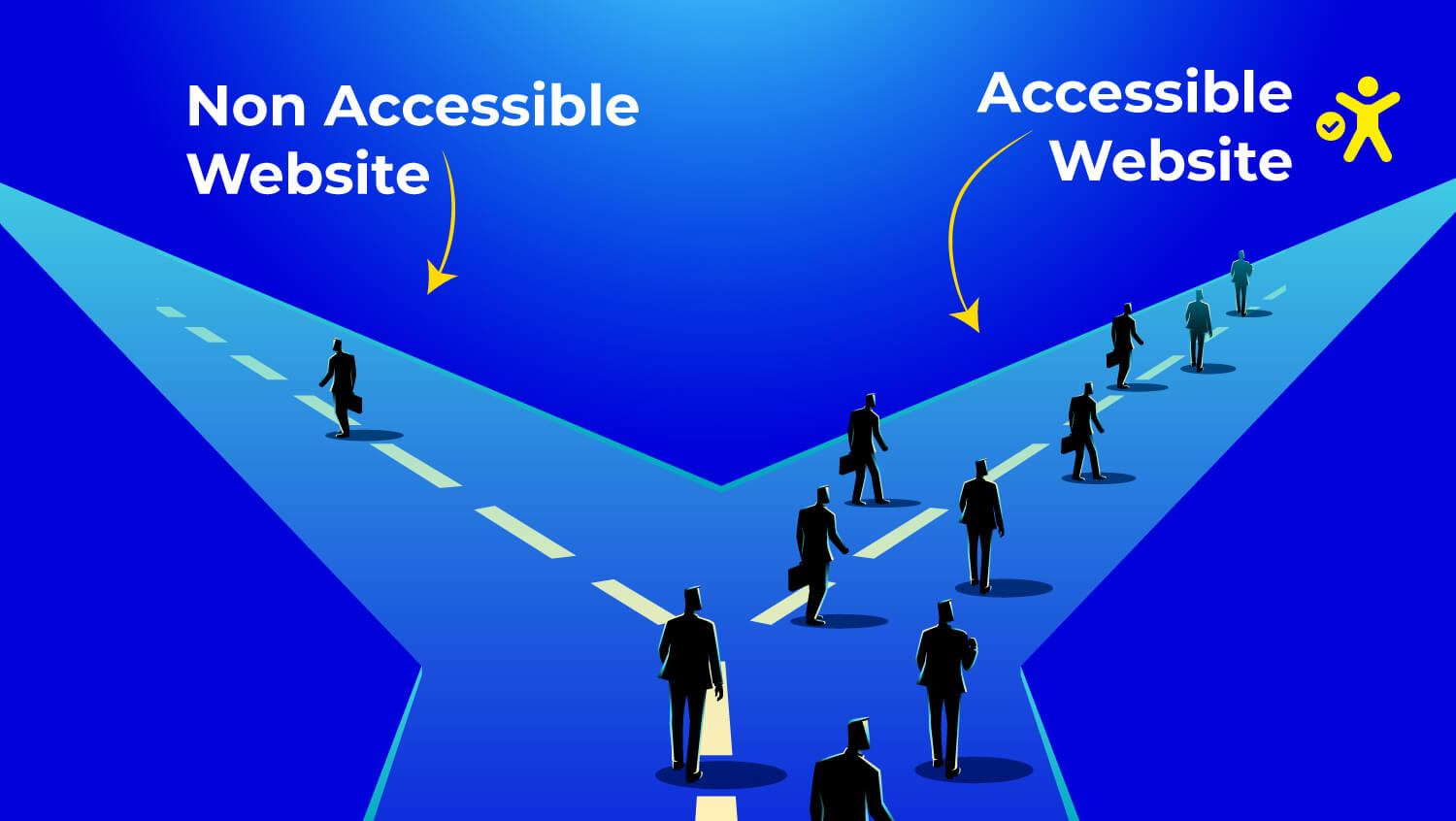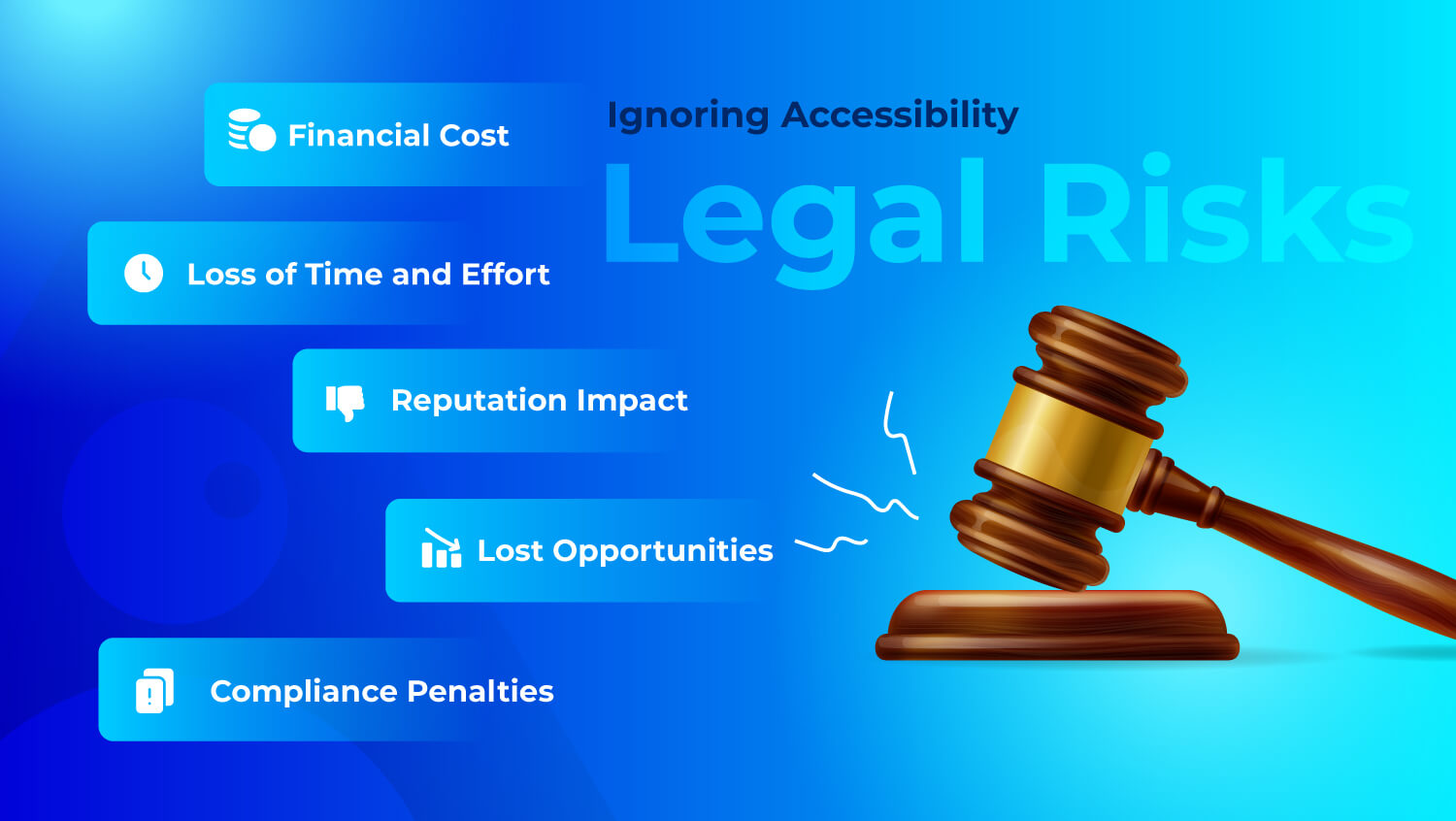Improving Accessibility for Users with Hearing Impairments
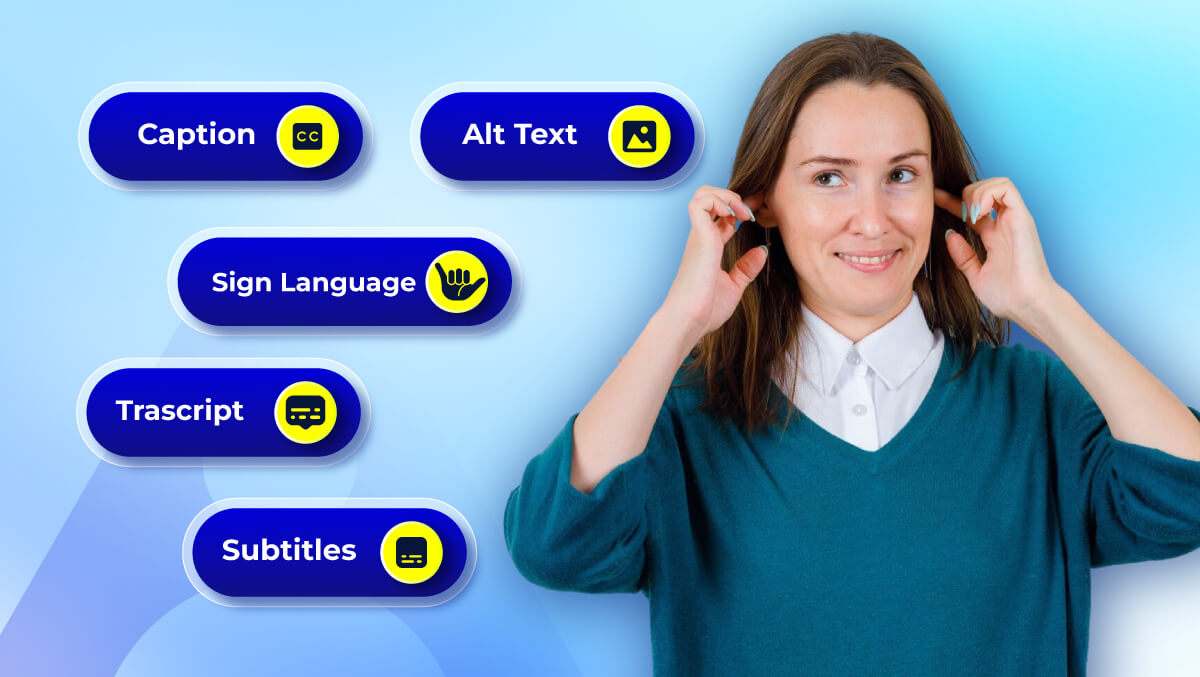
You may consider hearing loss a binary condition, where the question is whether you hear sound. While some individuals may hear faint sounds or whispering but may otherwise struggle with background noise, others rely entirely on sign language, their first language. And some people who fall somewhere in between the two.
Worldwide, more than 1.5 billion people live with some form of hearing loss, while almost 430 million people live with disabling hearing loss, which affects their everyday lives. A one-caption track may not work for every hearing loss situation, and a support line that assumes phone calls or any other way of communication excludes many operationally.
In the post, we will talk about the different forms of hearing impairment, the online difficulties, and how thoughtful, inclusive design in the mind can close that gap.
Let’s get started!
Understanding the Different Types of Hearing Impairments
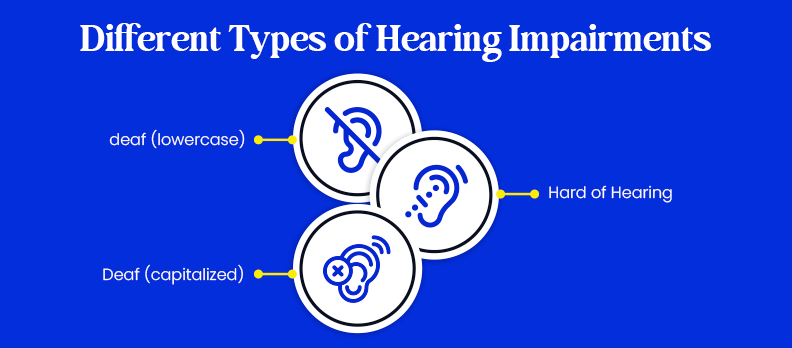
When it comes to hearing loss, it is important to understand that it is not a single condition. Hearing loss impacts many people in terms of medical practice and cultural identity. Understanding these differences allows us to problem-solve based on people's needs and ideas.
Deaf vs deaf (capitalized vs lowercase)
- deaf (lowercase) refers to the inability to hear, typically associated with deafness. A person classified as deaf might not use spoken language, hearing aids, or another supportive hearing modality or technology. They may or may not participate in the hearing world.
- Deaf (capitalized) refers to those who are members of a shared community identity that identifies as Deaf. Deaf culture is based on collectively shared experiences, with American Sign Language (ASL) or another sign language being a person's primary language.
People who identify as members of the Deaf community often do not identify deafness as a disability but as an identity of cultural membership.
Hard of Hearing and Partial Hearing Loss
Hard of hearing typically refers to mild to moderate hearing loss. A person who is hard of hearing may still be able to hear some sounds, but they may also use hearing aids, captions, and/or amplified sound to fully participate in conversations or the digital experience.
Many hard-of-hearing individuals prefer the description "hard of hearing" to "deaf" because they feel the former better describes them.
Common Barriers Faced by Hearing-Impaired Users Online
Although the technology has improved, many platforms are still unintentionally inaccessible to individuals with hearing disabilities.
- No Captions or Transcripts: Videos, podcasts, and webinars without captions are inaccessible.
- Audio-Only Notifications: Beeps, alarms, and alerts without visual or haptic alternatives.
- Inaccessible Customer Care: Support channels are based on voice calls and have no alternatives.
- Poorly Implemented Captions: Captions that are inaccurate, do not label speakers, or are out of sync.
- Live audio content without real-time captions: Live streams, webinars, and meetings without real-time captions or sign language options.
- Audio that auto-plays: Background sounds or media that play automatically without providing an option to mute.
- Unlabeled Audio Controls: Media players without captions, volume, or playback controls.
- Lack of Visual Indicators for Important Events: No text or icon to indicate an error message, notification, or alert.
- Inaccessible Educational or Training Resources: Courses or tutorials without text alternatives to the audio.
Accessibility Solutions for Hearing Impaired Users
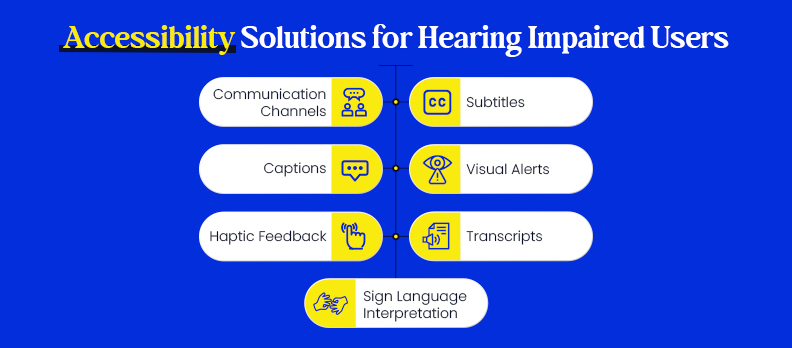
To support the access and inclusion of Deaf and hearing-impaired users, the design, content, and technology must address the barriers these users encounter.
Captions, Subtitles, and Transcripts
- Captions are a textual version of the spoken content of videos, webinars, and podcasts. They should include speaker identification and sound effects and be synchronized with the audio.
- Subtitles convert spoken content into other languages, helping hearing-impaired users and non-native speakers to understand.
- Transcripts provide a written record of the audio provided, allowing users to read the content at their own pace and refer to it later.
Sign Language Interpretation and ASL Resources
- ASL interpretation or sign-language video ensures culturally Deaf users have access to the content in their first language.
- Multiple options for sign language (for example, BSL for users in the UK) will ensure access to a global audience.
Visual Alerts and Non-Audio Cues
- Important alerts or notifications should always include a visual element such as a flashing icon, breadcrumb banner, or color change.
- Haptic feedback (vibrations) can also offer an alternative in mobile or wearable devices.
Multiple Communication Channels for Support
- Support, including for the Deaf and hearing impaired, should be offered by live chat, email, social media, video relay services, and phone calls only.
- Accessibility statements and clear guidance on contacting support enhance user confidence and reduce frustration.
AI and Technology for Hearing Accessibility
Artificial Intelligence (AI) is changing how digital platforms support deaf and hard-of-hearing users. AI-based tools have the potential to enhance content accessibility, decrease manual effort, and provide a more customized experience for users.
Real-Time Speech-to-Text and Captioning Tools
AI can develop captions instantly for live meetings, webinars, or videos that use streaming platforms. These tools offer additional options for hard-of-hearing users who use captions to access the content.
Many AI options can distinguish between speakers, add punctuation, and understand contextual concepts to improve reading ease and accuracy.
AI-Driven Context-Aware Captions
Beyond simple transcription, AI can understand context and consider non-speech elements as part of the captioning process to include descriptions for sounds and noise.
For example, in a framed caption of a video that sounds like an event in the background has occurred, such as a notification sound, viewing the caption as "[notification ping]" provides access to the meaning without just text.
In this instance, sound is not merely a nonverbal audio indicator but has meaning, and understanding that intended meaning is necessary to fully access the content.
Future Innovations: Sign Language Avatars and Haptic Alerts
AI-infused sign language avatars are being imagined to automatically translate spoken or written content into ASL or other sign languages.
In addition, smartphones, wearables, or desktops will have Haptic notifications that will use vibrations or visual patterns to replace or substitute audio sounds.
These examples will be developed to provide a multi-sensorial response for an accessible experience to provide user content through the best communicative modalities.
Legal Requirements and Accessibility Standards
Digital accessibility for individuals with hearing impairments is best practice and often a legal requirement.
WCAG Guidelines for Hearing Accessibility
- Transcripts for prerecorded audio and live captions, or live captioning alternatives, when the content is live.
- Visual alternatives for time-critical audio cues.
- Using WCAG 2.1, websites will conform to international accessibility guidelines and standards.
ADA and Global Laws
- The Americans with Disabilities Act (ADA) in the U.S., the Equality Act in the United Kingdom, and the AODA in Canada.
- The European Accessibility Act (EAA) in the EU outlines requirements for making digital content accessible to individuals with hearing impairments.
- Failing to do so might lead to a legal complaint, fines, and/or bad publicity.
Business Risks and Benefits
- If you do not consider individuals with hearing impairments, your audience reach, engagement, and trust in your brand will suffer.
- Good accessibility increases satisfaction, builds loyalty, and improves SEO through accessible content like transcripts.
These requirements ensure that digital spaces are inclusive, compliant with the law, and easy for users to navigate.
Conclusion
Whether captions, transcripts, visual alerts, sign language support, or AI tools are used, creating an accessible experience improves user experience for a larger audience.
If you do not know how accessible your website or digital content is, a free accessibility audit is a great place to find gaps and suggest actionable improvements. This is a good step to take to ensure your platform is friendly and usable for all users, including people who may be hard of hearing.
FAQs:
"deaf" (lowercase) refers to the medical condition of not hearing, while "Deaf" (uppercase) refers to a cultural identity in the Deaf community. Hard of hearing refers to mild to moderate hearing loss.
Captions allow users to access spoken information in videos, webinars, or podcasts. They help understand speech and follow spoken content.
Yes. AI-powered tools can provide real-time speech-to-text transcription, context-aware captions, and even sign language avatars to increase user inclusivity and accessibility.
Yes. Laws, such as the ADA in the U.S., the Equality Act in the U.K., and the European Accessibility Act, require digital content to be accessible. Additionally, compliance with WCAG guidelines is recommended globally.
Starting with captions, transcripts, and visual alerts, and offering several different ways to support the user can help. Testing your web content with hearing-impaired users and using AI tools can also raise the level of accessibility.



